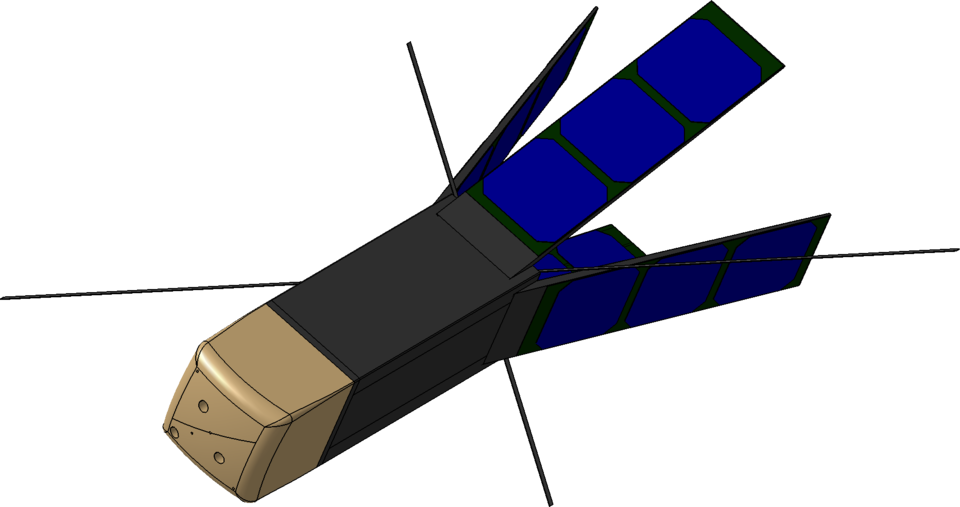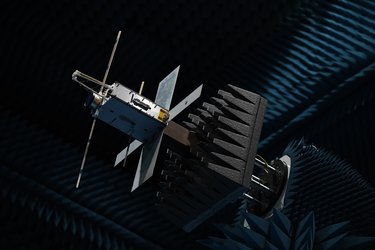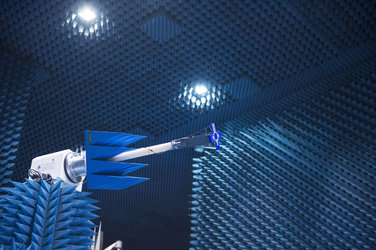Technology CubeSats
In parallel with the Proba minisatellite missions, ESA is now also utilising much smaller ‘CubeSat’ nanosatellites. These are employed for the In-Orbit Demonstration (IOD) of miniaturised technologies and for small payload-driven missions.
What are CubeSats?
These nanosatellites typically weigh between 1 and 10 kilograms and follow the popular ‘CubeSat’ standard, which defines the outer dimensions of the satellite within multiple cubic units of 10x10x10 cm. For instance, a 3-unit CubeSat has dimensions of 10x10x30 cm and weighs about 3-4 kg. This is typically the minimum size which can accommodate small technology payloads.
Fixing the satellite body dimensions promotes a highly modular, highly integrated system where satellite subsystems are available as ’commercial off the shelf’ products from a number of different suppliers and can be stacked together according to the needs of the mission. Furthermore, the standard dimensions also allows CubeSats to hitch a ride to orbit within a container, which simplifies the accommodation on the launcher and minimises flight safety issues, increasing the number of launch opportunities as well as keeping the launch cost low.
Due to their high degree of modularity and extensive use of commercial off the shelf subsystems, CubeSat projects can be readied for flight on a much more rapid basis compared to traditional satellite schedules, typically within one to two years.
Why is ESA interested in CubeSats?

CubeSats have already proved their worth as educational tools. In addition, they have various promising applications in the ESA context:
- As a driver for drastic miniaturisation of systems, ‘systems-on-chips’, and totally new approach to packaging and integration, multi-functional structures, embedded propulsion
- As an affordable means of demonstrating such technologies, together with novel techniques such as de-orbiting devices or formation flying
- As an opportunity to carry out distributed multiple in-situ measurements, such as obtaining simultaneous multi-point observations of the space environment (which might include the thermosphere, ionosphere, magnetosphere or charged particle flux)
- As a means of deploying small payloads – for instance, very compact radio receivers or optical cameras where the potential deficit in performance may be largely compensated by the multitude of satellites involved.
Technology in-orbit demonstration CubeSats
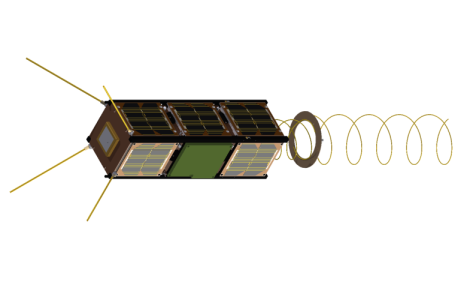
Since 2013, ESA has begun a number of CubeSat missions and technology development activities funded under the In-Orbit Demonstration part of the General Support Technology Programme (GSTP). The following IOD projects are underway:
- GomX-3 (led by Gomspace, Denmark): a 3-unit CubeSat mission to demonstrate aircraft ADS-B signal reception and geostationary telecommunication satellite spot beam signal quality using an L-band reconfigurable software defined radio payload. A miniaturised high data rate X-band transmitter developed by Syrlinks and funded by the French space agency CNES is being flown as a third party payload. The satellite was deployed from the International Space Station on 5 October 2015
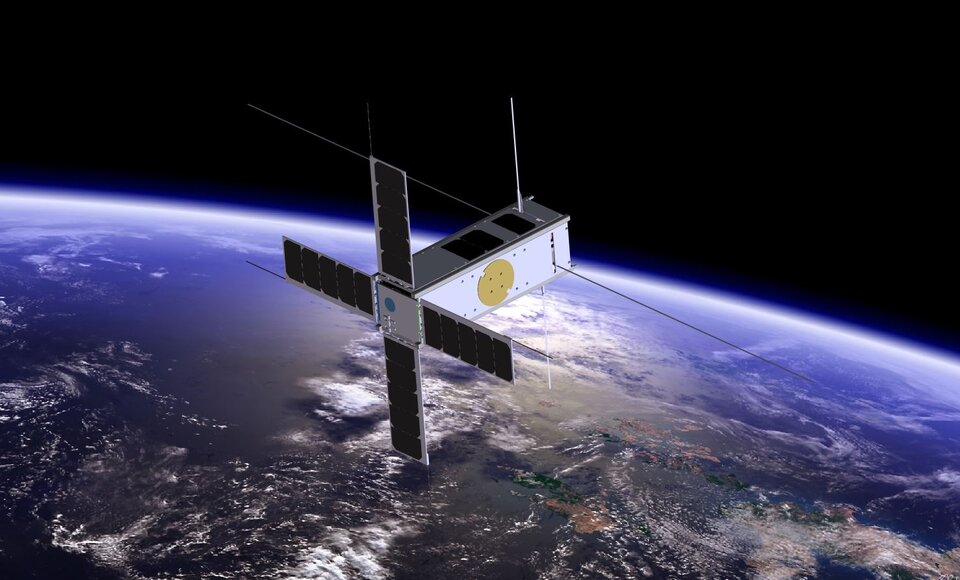
- SIMBA (led by the Royal Meteorological Institute Belgium): a 3-unit CubeSat mission to measure the Total Solar Irradiance and Earth Radiation Budget climate variables with a miniaturised radiometer instrument, due to be launched in 2016 as part of the European Commission-funded multi-cubesat QB50 flight
- QARMAN (led by the Von Karman Institute, Belgium): a 3-unit CubeSat mission to demonstrate reentry technologies, particularly novel heatshield materials, new passive aerodynamic drag and attitude stabilisation systems, and the transmission of telemetry data during reentry via data relay satellites in low-Earth orbit, due to be launched in 2016 as part of the QB50 flight
- Picasso (led by Belgian Institute of Space Aeronomy with VTT Finland and Clyde Space, UK): a 3-unit CubeSat mission to measure Stratospheric Ozone distribution, Mesospheric Temperature profile and Electron density in the ionosphere using a miniaturised multi-spectral imager for limb sounding of solar disk, and a multi-Needle Langmuir Probe, due to be launched in 2016 on the QB50 flight.
Technology development activities
The following CubeSat technology development activities commenced in 2013, and are to be completed in 2015:
- Design and development of an S-band transmitter prototype compatible with the ESA ground station network (ISIS, The Netherlands)
- Design and development of a miniaturised star tracker prototype (ISIS, The Netherlands)
- Active Debris Removal (ADR) technologies for later sub-scale demonstration at low cost on a future CubeSat IOD mission: Phase 1 includes detailed technical evaluation and trade-offs, and conceptual design of the IOD CubeSat. (Swiss Space Center)
- Design and development of prototypes for a dual redundant CCSDS-compatible UHF transceiver, fault tolerant dual redundant on-board computer, and a structure with backplane inter-connection system for rapid satellite integration (C3S, Hungary)
- Design and development of a hyperspectral imager (HyperCube) for CubeSat-based remote sensing missions (Cosine Research, The Netherlands).
Mission application studies
In addition to the IOD missions and technology development activities, studies focussed on the mission applications of nano-satellite systems and miniaturised payloads have been started during 2014, including:
- Remote Sensing with Cooperative Nanosatellites (four parallel ‘Sysnova’ studies funded by the General Studies Programme)
- Nanosatellites for commercial telecom services (funded by the ARTES 1 programme).
Contacts
Roger Walker - for technical questions
Email: Roger.Walker@esa.int
Kenza Benamar - for programmatic questions
Email: Kenza.Benamar@esa.int




